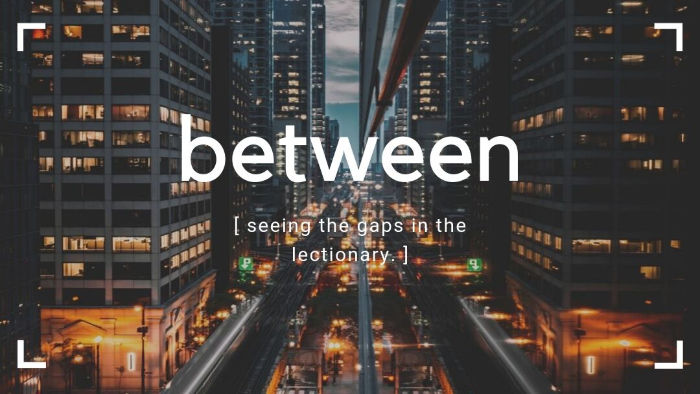
A look at the gaps in the lectionary.
This week: the gap between
The text: from Mark 8:31-38 to John 2:13-22
This is an intriguing gap piece this week. If we continued in the gospel of Mark, this event would take place right after Jesus and the disciples arrive in Jerusalem in chapter 11. The triumphal entry and then, the very next day, the fateful visit to the Temple.
In John’s gospel, however, this story takes place toward the beginning of the journey. It comes soon after the Wedding at Cana—with only a few days spent in Capernaum between them.
Digging into this story is for a later reflection, but recognizing the two different setups is likely to be useful to the preacher.
When the story takes place in Holy Week
This story’s place in the midst of Holy Week makes it one event among many. Something potentially forgotten and obscured by the significant events in the latter half of the week.
But it is, of course, significant. It is sandwiched between the popular ride into town on a donkey, where the crowds celebrate him, and his verbal jousting with the religious leaders on Tuesday. Those confrontations on Tuesday offer some of our most famous quotes, including the oft-quoted response to paying taxes and the greatest commandment.
But in the midst of the story of Jesus’s last week, we have a confrontation at the Temple that has Jesus at his most civily disobedient. He disrupts the commerce, threatens the property, and berates those engendering the whole apparatus.
This, of course, is the most difficult part of the event, then. Recognizing the threat Jesus still poses to the practice of making money—particularly off the poor and the faithful.
Jesus’s critique of the powerful and their control of the Temple reverberates through the days that follow. It no doubt leads to the confrontations of the next day, as the leaders scramble to silence this disruptive figure.
And yet, it is all too easy to name this as the reason they want him dead. Allowing their framing of the events: that Jesus is speaking heresy: all too much air time. There is no heresy, of course. But they are no less afraid. Afraid of what an honest Jesus means. Or worse—a dishonest one.
Perhaps it is too easy to demonize the Pharisees and scribes. I, too, revel in naming their delusional hatred. But there is a calculation they are making that makes sense to them: that Jesus isn’t the Messiah. He sure doesn’t seem like one. Just look at him! He arrived on a donkey, not a warhorse. And if he isn’t the Messiah and then fails in his confrontation with Rome, then we’re all sunk.
An aside about belief
This story starts to sound like a basic question about belief. That the crowds believed in Jesus and the leaders didn’t. And in this way, belief and faithfulness are the crown virtues of our religious identity. This, however, is a kind of fundamentalist distortion that makes the story far less useful.
A lack of belief from the leaders is both a historical mistake and a tragic reality for the Christian story. But it isn’t a lack of faith. Much like our own belief is frequently colored by our politics and worldview, theirs is similarly colored.
It is our own myopic understanding of belief, and the cost of it, that makes these stories more difficult.
After the Wedding at Cana
When we get the story early in Jesus’s campaign, as we do in John, we receive it as its own story. It is given the gravitas of a moment with its own bounds and outcomes.
Its primary service is to set the stage for ongoing confrontation with Temple leaders. Leaders who will, within the next handful of chapters, begin plotting his death.
As readers, we get this as the follow-up to the first public miracle: the wedding where Jesus turns water into wine. This significance is far less obvious, however. For there is nothing miraculous here, save the idea that Jesus walks out of the Temple alive and not in chains.
This version is also the most violent (the only one that contains a whip) and draws our focus primarily to the juxtaposition of the physical Temple to Jesus’s body rather than contrasting the behavior of the leaders to the Kin-dom being preached by Jesus.
